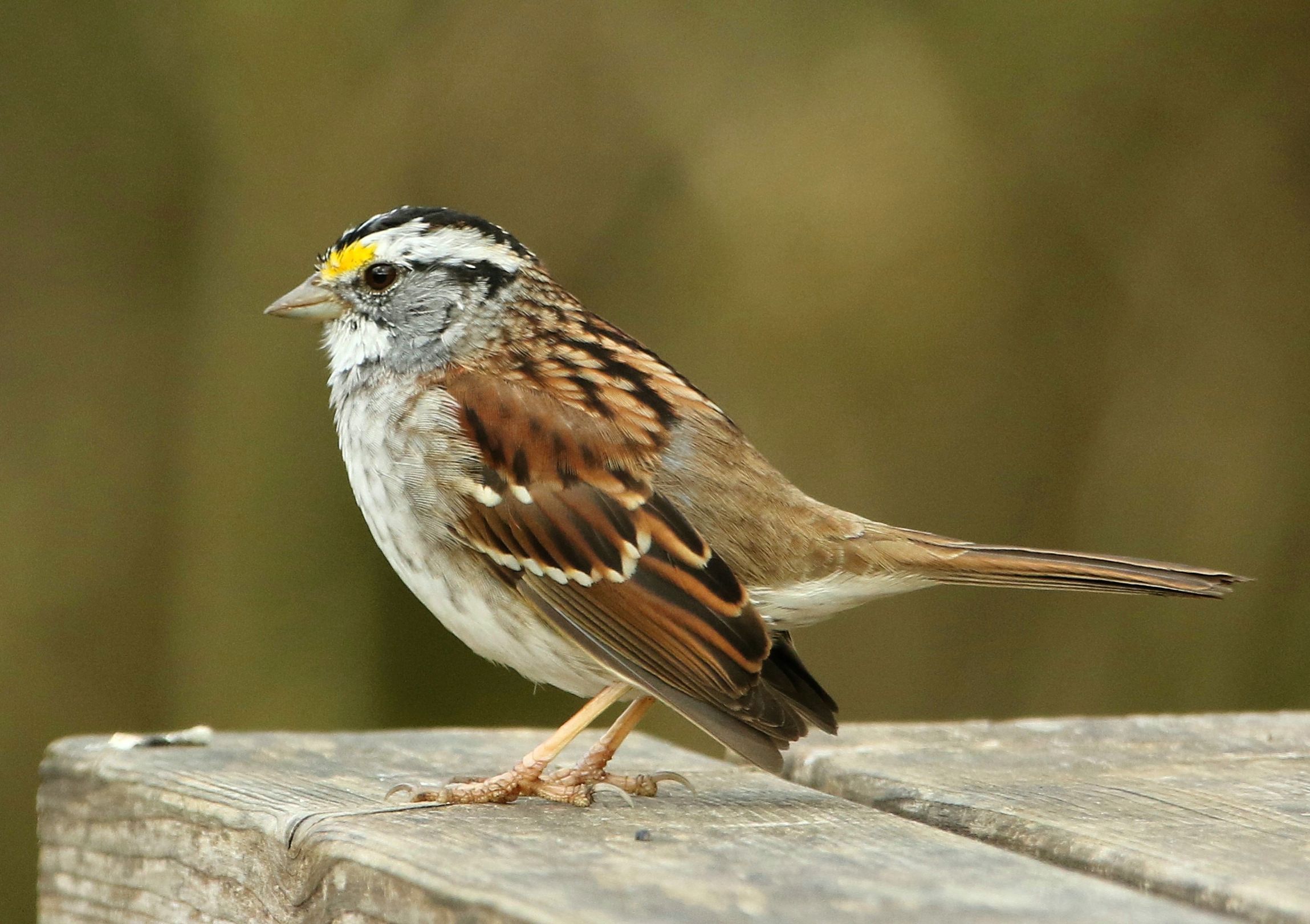For my first post-lockdown 3.0 twitch and indeed just my second anywhere since early October I secured a very welcome life list addition. A male White-throated Sparrow, first sighted at Barcombe Cross (TQ417158) on 3rd February, was a bird I bookmarked to experience if still present once Covid travel restrictions were eased. After being reported again early on Friday 9th it has attracted a lot of attention, including my own.
The previous day another north American vagrant, a Northern Mockingbird that had spent the lockdown period in south Devon also relocated to Sussex. Being a British tick and beyond my preferred range I hadn’t rushed to see it at the earliest opportunity, and clearly wasn’t yet back into get up and go mode when news of the nearer location broke. I decided to sleep on things and go on Friday 9th if it was still at Pulborough, but in the morning it had moved on. That negative was immediately followed by the first news in a while of the Sparrow, and this one being a lifer I got up and went.
White-throated Sparrow is a common and widespread passerine within its Nearctic range but a very rare vagrant to the British Isles. The species breeds across central Canada and New England and winters in the southern and eastern United States. They typically forage on the ground under or near low dense vegetation such as today’s location, eating insects and seeds, and are particularly attracted to bird feeders.
Arriving in the village around 11:30am I secured what must have been the last parking space anywhere and the reason soon became clear. At the twitch site in a sunken copse between some playing fields and allotments there was quite a gathering of birders, many of whom must have gone to Sussex for the Mockingbird then opted for plan B. Amongst them was Ewan who had travelled separately with another colleague, but our quest was not co-operating.
We remained on site for around two hours and the prospect of seeing the bird with so many people tramping around its patch seemed poor, and so we left in the early afternoon. Shortly afterwards the WT Sparrow appeared again, coincidentally with the number of suitors having dwindled somewhat. Pictures appeared online of it perched in Blackthorn blossom (see here) and when I played it’s song on Xeno Canto (here) that was so distinctive I decided to go back early on Sunday. I contacted Ewan, offering to drive if he wished to join me and the re-twitch was agreed.
This time we arrived just after 7:00am and the local scenario was just the same as two days previously. Once again we found the last available parking space anywhere in the High Street then walked out to join just as many fellow birders at the top of a slope overlooking the copse. The difference now was a seed-adorned picnic table at the foot of the slope to which the Sparrow had been attracted through the intervening day. A contrived situation yes, but also the best means to avoid a repeat dip since we were dealing with a bird of normally skulking habits that was ranging through very dense habitat.
It seemed merely a matter of time until mission would be accomplished since the White-throated Sparrow by now knew very well where the food source was. It duly appeared after around 30 minutes on the decking below the table (pictured above), then returned to view three more times including on the table top before we moved on at around 9:15am. In between those showings it would disappear into the cover of the copse from where it could be heard singing intermittently.
This bird’s routine must now be well established of coming to seed at the table which is ideally placed by the thicket edge at the foot of what is a natural amphitheatre. So expect moss-covered logs and other photographer’s props to adorn the table top from now on if a daily circus at the site intensifies. The greater challenge will be capturing the WTS pictorially perched and singing within the copse but I will not be going back. It feels enough to have come and gone here when I did.



My own best effort for the day is the right hand picture above. Having converted this record satisfyingly at Barcombe we moved on to visit a well-established Little Bunting at Warnham Local Nature Reserve (RH12 2RA – TQ167323) near Horsham. This was an excellent opportunity to observe the intricate plumage of an adult male at close quarters. But I also felt in another artificial situation given the vast amount of laid on food that keeps the bird at what is an educational and family fun facility rather than a truly wild location. My first ever Little Bunting in Cardiff in February 2015 (see here) was experienced in similar circumstances coming to seed in front of a hide at a LNR feeding station. Today’s bird was my fifth personal record, the three intervening ones also being at English sites.
It was good to get out a bit further again on these two days and this double twitch was a step in the likely adjustment process back to more normal life. That will be aided by my now having a new and better vehicle, and for 2021 I intend to pursue a not too ambitious national wildlife agenda through to autumn whilst also maintaining this journal’s secondary botanical bias. I feel no inclination yet to resume international travel at whatever the earliest opportunity might be. Onward then.



